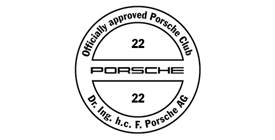scam75
Well-known member
Hi All
After my recent engine rebuild I have been closely monitoring oil pressures. I just wanted to see how these hot engine oil pressures compared to others.
800 rpm - 2 bar (idle for my car)
1,100 rpm - 3 bar
1,800 rpm - 4 bar
I don't recall previously ever seeing under 3 bar at hot idle before my engine rebuild, however I've got a new sender and this one shows 0 on the gauge with ignition on/engine off. The old sender showed nearly 1 bar. I guess I'm maybe seeing actual pressure now rather than slightly inflated and I just need to get used to it!
Cheers
Stuart
After my recent engine rebuild I have been closely monitoring oil pressures. I just wanted to see how these hot engine oil pressures compared to others.
800 rpm - 2 bar (idle for my car)
1,100 rpm - 3 bar
1,800 rpm - 4 bar
I don't recall previously ever seeing under 3 bar at hot idle before my engine rebuild, however I've got a new sender and this one shows 0 on the gauge with ignition on/engine off. The old sender showed nearly 1 bar. I guess I'm maybe seeing actual pressure now rather than slightly inflated and I just need to get used to it!
Cheers
Stuart









